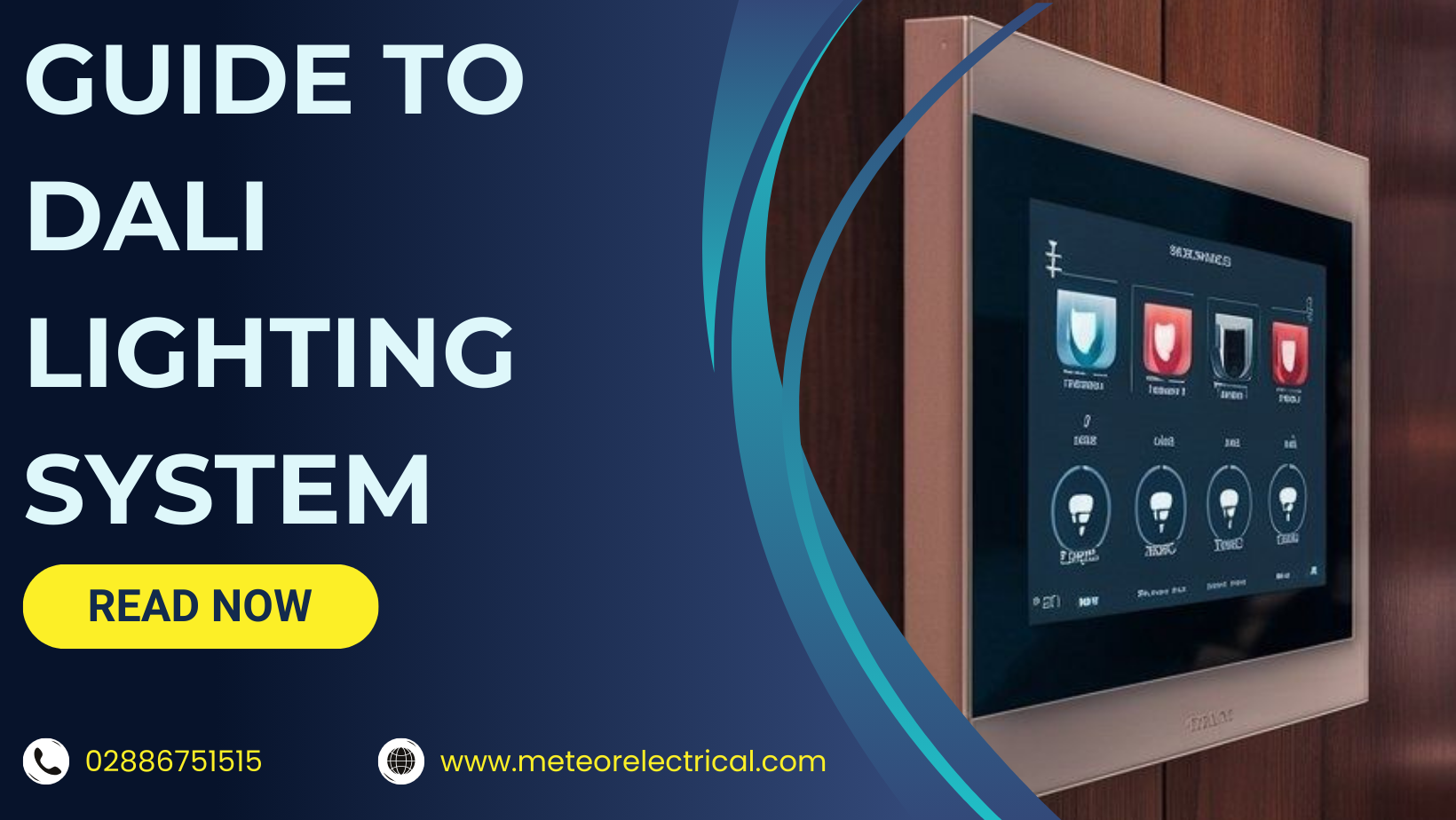DALI Lighting System: A Comprehensive Guide
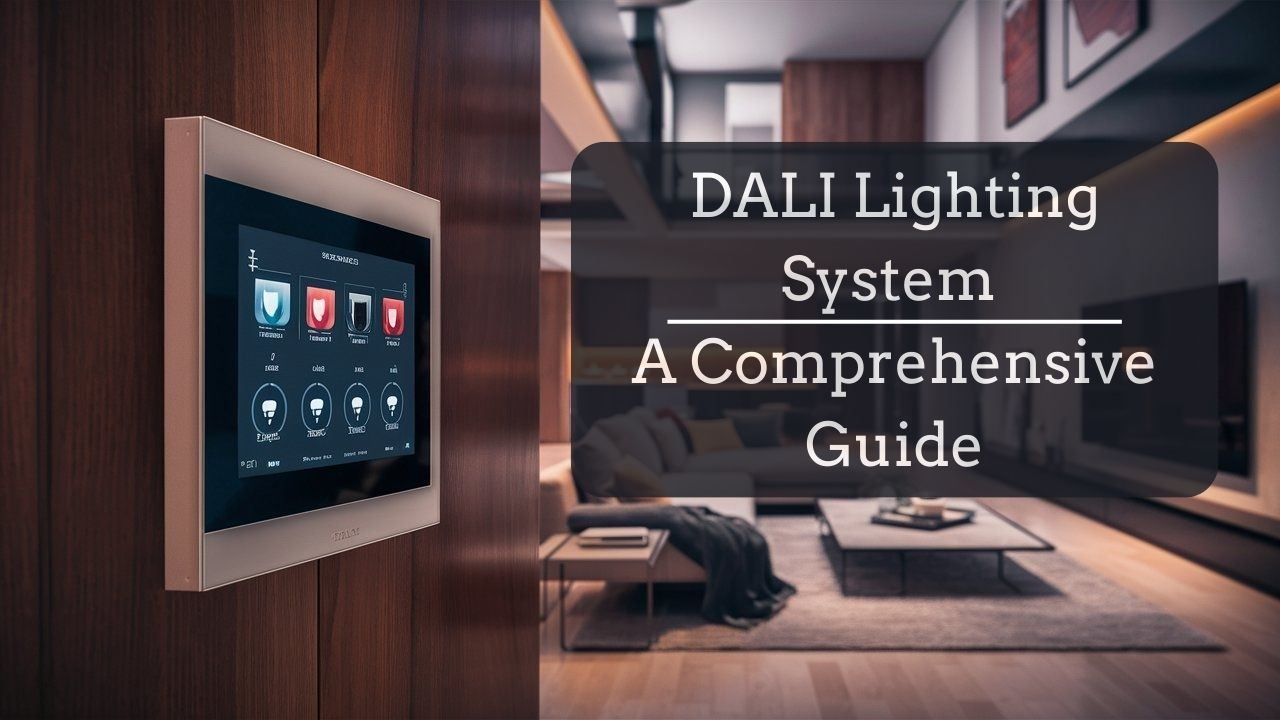
Lighting is not just about illumination; it’s a critical aspect of energy consumption in residential and commercial buildings. With energy efficiency becoming a top priority, having complete control over your lighting system can significantly impact your energy bills and environmental footprint.
Enter the DALI lighting system, an advanced, smart lighting solution that offers unparalleled flexibility and customisation. The DALI lighting control system allows you to address and control each light fixture individually.
But what exactly is the DALI lighting system, and how can it revolutionise your lighting setup? This guide will walk you through everything you need to know about this innovative technology, from its core components to its benefits.
Ready to transform your lighting experience? Let’s dive into the world of DALI lighting systems and discover how you can achieve greater control, efficiency, and customisation.
What Is A DALI Lighting Control System?

Credit: LEDs Magazine
DALI stands for Digital Addressable Lighting Interface, a sophisticated digital protocol for managing LED lighting systems. Established in the 1990s, DALI has become a leading standard for lighting control, enabling individual addressing and control of each light fixture through a simple two-core lighting control circuit (Lighting Controls Association).
The DALI protocol supports seamless integration and interconnectivity, ensuring that all components marked with the DALI logo, regardless of the manufacturer, work together effortlessly (DALI Alliance). In 2020, the introduction of DALI-2 brought enhanced interoperability and additional control devices like application controllers and input controllers, adhering to the IEC 62386 international standard (IEC Standards).
How Does A DALI Lighting System Work?
The DALI lighting system sends digital commands through a DALI bus to LED drivers, which regulate the current and prevent overloading. This allows precise control over light fixtures, from dimming and adjusting brightness to changing colours and setting scenes (LED Journal).
The system’s bi-directional communication means that each fixture can send feedback to the control unit, ensuring efficient monitoring and troubleshooting (Electrical Contractor Magazine).
How Does DALI Addressing Work?

The DALI line addresses devices by triggering a randomisation component on each appliance to generate a large 3-byte number. This unique identifier is used alongside special instructions that allow the DALI controller to assign specific short addresses to each appliance on the line (DALI Alliance).
Once the device receives a short address, the random addresses are no longer required, and all subsequent communications occur using the new short address. This streamlined approach ensures efficient and precise control over each light fixture.
What Is The Topology Of The DALI Lighting System?
The DALI lighting system uses a structure that flows information between the controller and the light fixture. The light unit executes instructions from the controller and responds accordingly to any information requests, such as unit function assessments (LED Journal).
Unlike other systems, the DALI network does not require a wiring group. All the wiring in this system is parallel to the DALI bus, and since all data is transmitted through commands sent by a controller, mechanical relays are unnecessary. This configuration makes the DALI lighting control system ideal for a simple yet flexible wiring network (Electrical Contractor Magazine).
After completing the cable connections, the system can be positioned using the controller’s software. When the configuration is finished, you can create multiple programs and scenarios for lighting. Each light fixture offers numerous customisable options, including control over fade rate and colour range (Lighting Controls Association).
Key Components of the DALI System
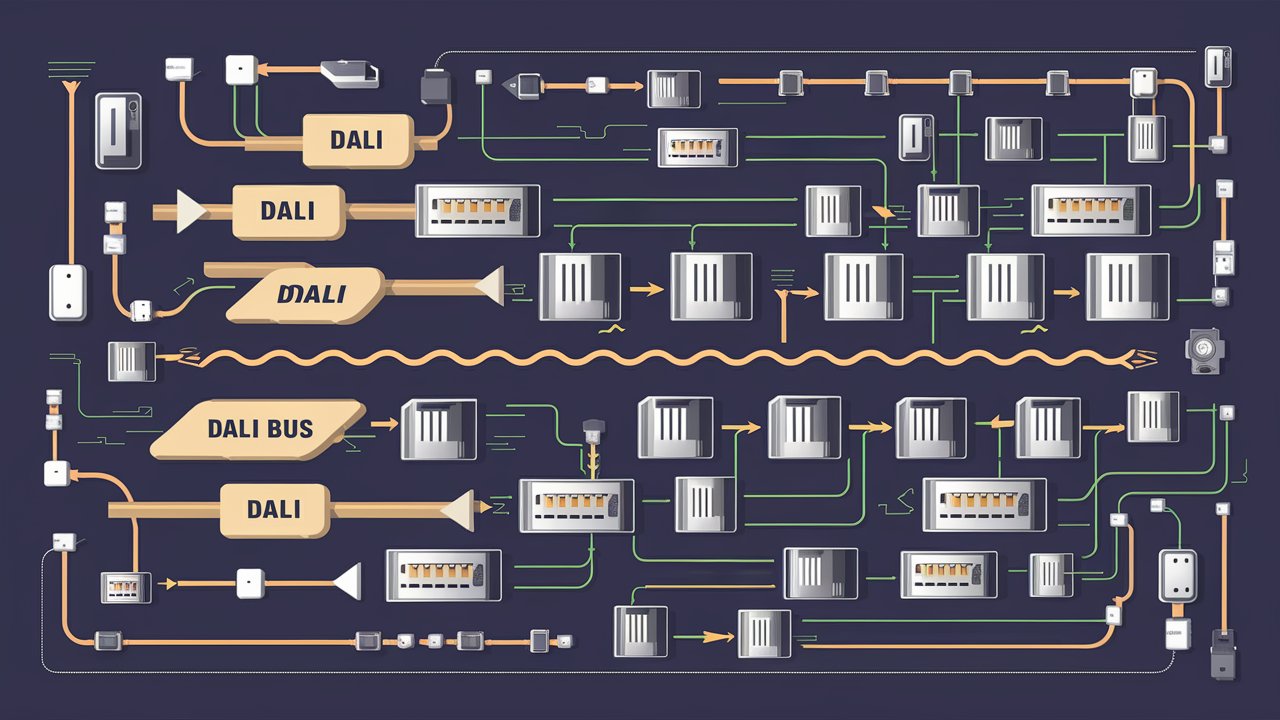
DALI Bus
The unpolarised DALI bus is the network’s backbone, carrying command signals from controllers to LED drivers. Powered by a separate bus power supply, it facilitates communication and control without needing mechanical relays (DALI Alliance).
Control Gear
This component, primarily the DALI LED driver, receives data from controllers and adjusts the current supplied to the lamps. It supports multiple LED drivers and ballast networks, ensuring flexible and efficient lighting management (LED Professional).
Control Devices
These are divided into application controllers and input devices. They manage the data flow and user-generated instructions. Devices like PIR motion detectors, light level sensors, sliders, dimming controllers, and scene controllers enhance the system's functionality (Lighting Controls Association).
Wiring a DALI Lighting System
Wiring a DALI system offers high flexibility, allowing configurations such as daisy chains, stars, or tree networks but not rings or meshes. The system can handle up to 64 devices per line, each requiring its power supply to ensure optimal performance (Electrical Contractor Magazine).
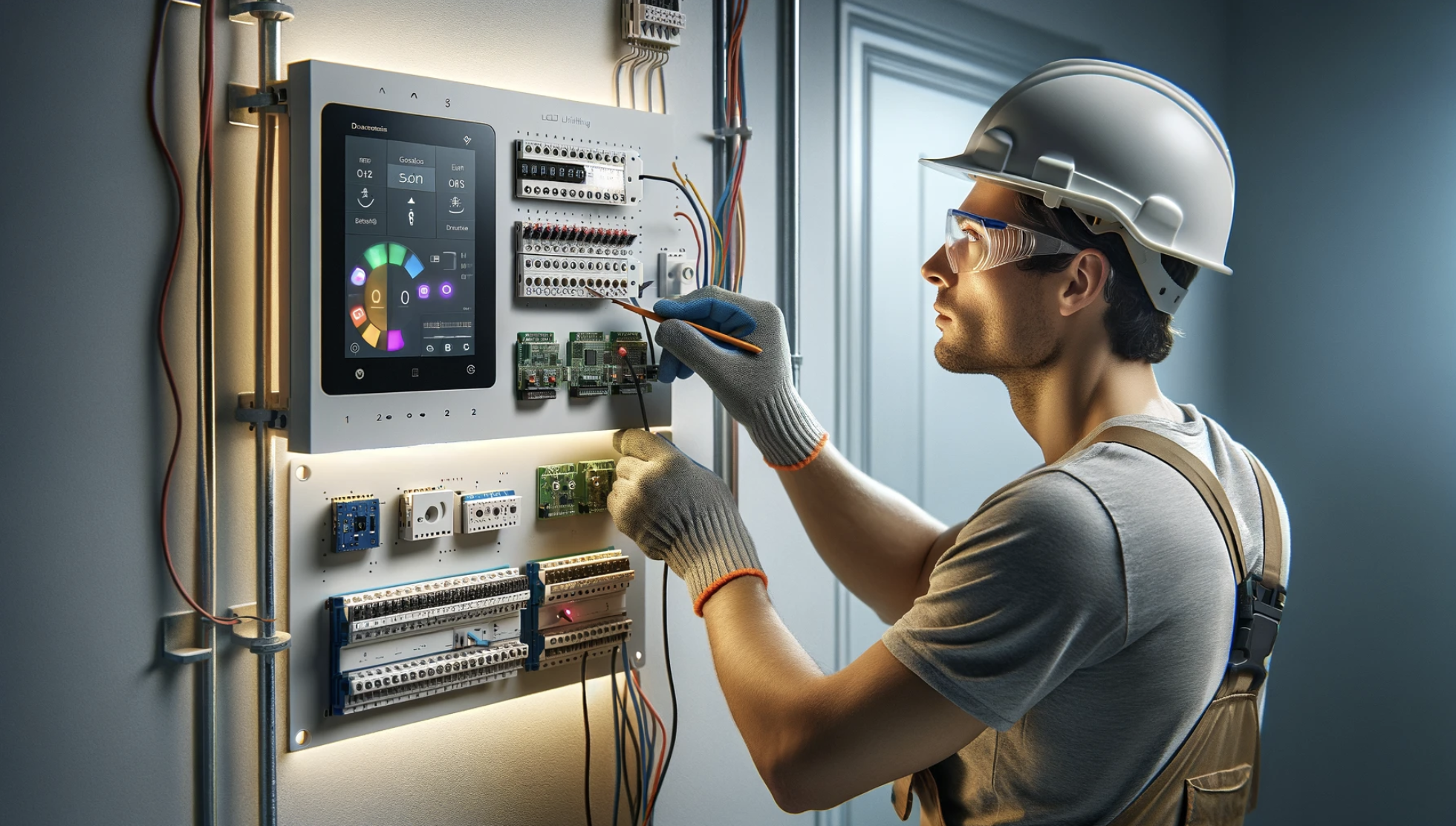
Steps to Wire a DALI Driver:
- Set the amperage.
- Connect the transparent wire to the driver.
- Attach the neutral wire.
- Bridge the phase, driver, and push button connections.
- Connect the output wire to the control wire.
- Link the final wire from the fixture to the driver.
- Power up the circuit and control the lighting via the DALI driver.
Want to learn more about wiring a DALI lighting system? Here’s a video to help you out!
Credit: LED Lucibel
What Are The Benefits of Using a DALI Lighting System?
Switching to a DALI lighting system offers numerous advantages over traditional lighting setups. Here are some key benefits that make DALI a superior choice for both residential and commercial applications:
Lighting Configuration Without Rewiring
One of the standout features of the DALI system is the ability to configure your lighting without needing to rewire. If you divide a room into two sections, you can program the lights to operate in separate groups without touching the existing wiring. This flexibility allows you to alter the function of dimmable LED bulbs without modifying the circuitry.
Program Lights According to Preference
The DALI system enables you to program your lighting to match your preferences and the space's requirements. You can set the lighting levels low for rooms with ample daylight to save energy. Conversely, you can adjust settings to limit energy consumption in other areas, making your lighting system adaptable to various conditions.
Multiple Settings in One System
With a DALI network, you can maintain multiple settings within a single system. This capability is especially beneficial for commercial properties where different sections of a floor may require distinct lighting configurations. There's no need for multiple DALI systems; one network can handle all your needs efficiently (Electrical Contractor Magazine).
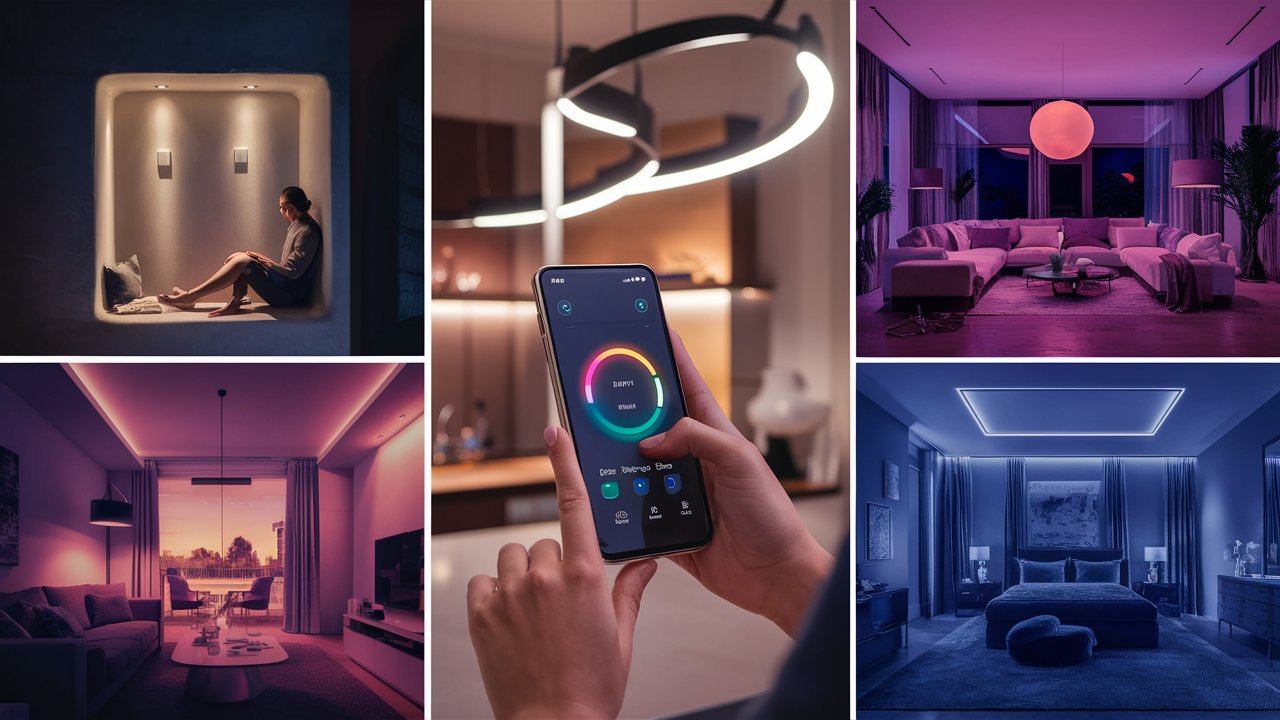
Simple Installation
Installing the DALI system is simpler compared to other lighting systems. It uses a straightforward five-wire setup, eliminating the need for extra circuit components. This simplicity ensures a seamless installation process while offering extensive customisation options. Moreover, easy installation means maintenance work can be conducted with minimal hassle and downtime.
Quick Access
Depending on space requirements, the DALI system provides easy presets for efficient switching between light programs. For multi-purpose spaces, these presets allow quick transitions between different lighting settings, enhancing the versatility of your environment.
Accurate Monitoring
Thanks to its bidirectional communication, the DALI system offers the most accurate and up-to-date information on your lighting fixtures. You can easily monitor their functionality and track their energy consumption, ensuring optimal performance and efficiency.
Incorporating these benefits into your lighting strategy not only enhances flexibility and efficiency but also optimises energy usage and control, making the DALI lighting system a wise investment for modern lighting needs.
Conclusion
In conclusion, the DALI lighting system is a powerful, flexible, and efficient solution for modern lighting needs. Its ability to provide precise control over individual light fixtures and ease of configuration without rewiring makes it an invaluable tool for residential and commercial applications. The DALI system’s seamless integration, simple installation, and accurate monitoring capabilities further enhance its appeal, ensuring that your lighting setup is both adaptable and energy-efficient.
By adopting a DALI lighting control system, you are investing in a technology that offers unmatched customisation, efficiency, and convenience. Whether you are looking to optimise the lighting in your home or create a more efficient lighting network in your commercial space, DALI provides the tools and flexibility needed to achieve your goals.
For the best electrical components and expert guidance on implementing DALI systems, look no further than Meteor Electrical. Explore our blog for more guides, how-tos, and in-depth information about electrical products. Visit Meteor Electrical today and take the first step towards a smarter, more efficient lighting solution.
FAQ: DALI Lighting System
1. What is a DALI lighting control system?
The DALI (Digital Addressable Lighting Interface) lighting control system is a sophisticated digital protocol designed to manage LED lighting systems. It allows for individual addressing and control of each light fixture through a simple two-core lighting control circuit.
2. How does a DALI lighting system work?
A DALI lighting system operates by sending digital commands through a DALI bus to LED drivers, which regulate the current and prevent overloading. This enables precise control over light fixtures, from dimming and adjusting brightness to changing colours and setting scenes.
3. What are the benefits of using a DALI lighting system?
Benefits of a DALI lighting system include:
- Flexibility and customisation without rewiring
- Programmable lighting settings
- Multiple settings within one system
- Simple installation
- Quick access to different lighting programs
- Accurate monitoring of lighting fixtures and energy consumption
4. How do you wire a DALI lighting system?
Wiring a DALI system involves setting the amperage, connecting the wires to the driver, bridging the phase and driver connections, connecting the control wire, and linking the final wire from the fixture to the driver. The system can handle various configurations, such as daisy chains, stars, or tree networks.
5. What is DALI addressing?
DALI addressing involves assigning unique short addresses to each appliance on the DALI line using a randomisation component. This allows for precise control and communication with each light fixture in the system.

